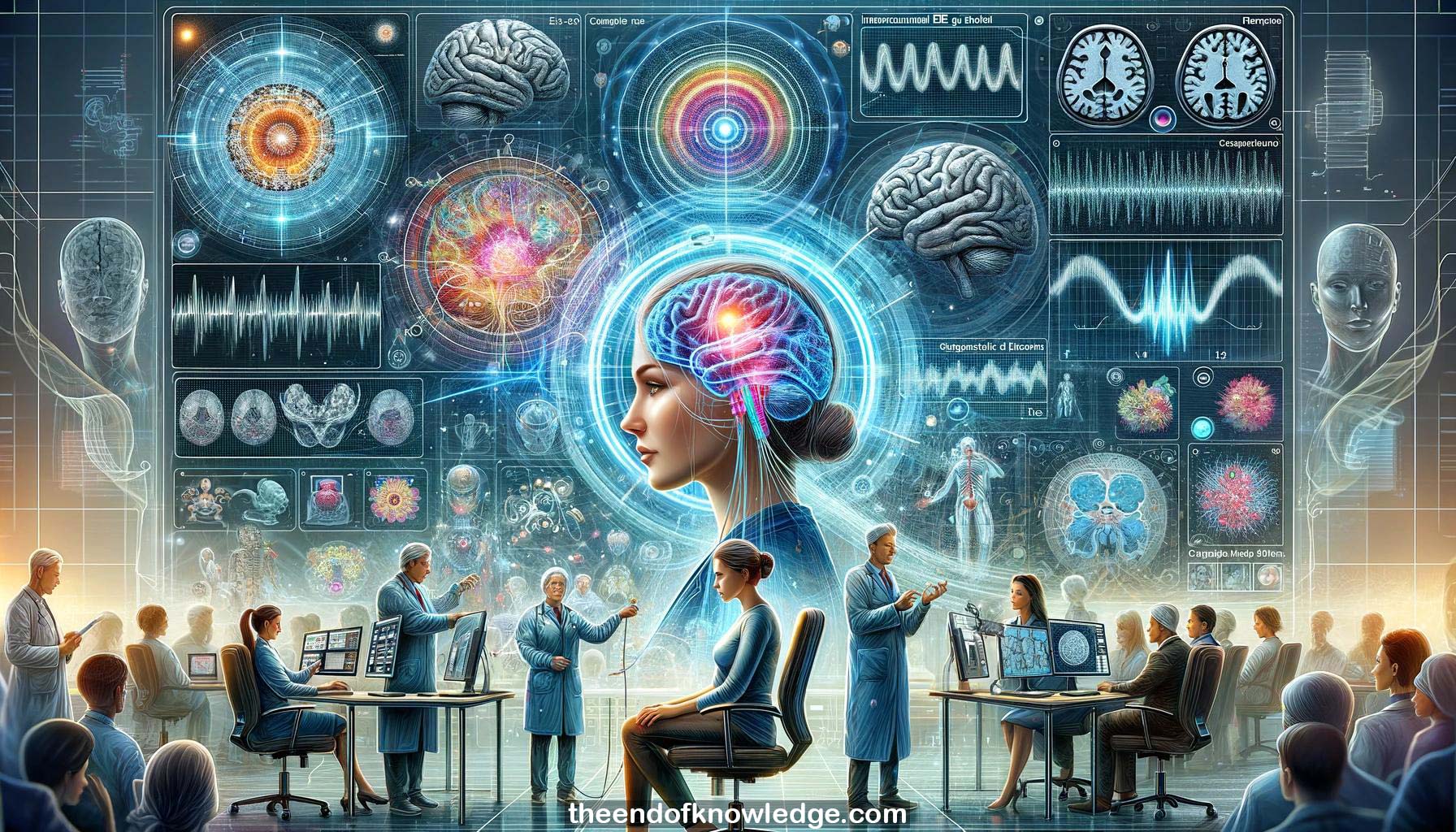 >
>
Concept Graph & Resume using Claude 3 Opus | Chat GPT4 | Llama 3:
Resume:
1.- Dr. Milena Korostenskaja discusses her research using EEG, MEG, and intracranial EEG recordings to study the brain and help epilepsy patients.
2.- She studied the effect of drugs on cognition using mismatch negativity response recorded with EEG and MEG during her PhD.
3.- Determining the source of brain activity from scalp recordings is an inverse problem that can have infinite solutions, especially with EEG.
4.- Intracranial recordings with depth electrodes during epilepsy surgery provided a solution to pinpoint the sources of mismatch negativity response.
5.- Intracranial recordings offer unique insights and are considered a gold standard, but were limited due to lack of standardized systems.
6.- Custom in-house systems used by few centers worldwide for intracranial research had limitations - prone to errors, difficult to use.
7.- BCI2000 software and g.tec amplifiers provided a solution, but the system was still cumbersome to use in a clinical setting.
8.- A new complete easy-to-use standardized system developed by g.tec allowed intracranial research to expand to more centers globally.
9.- The system is FDA-approved, user-friendly, minimizes need for in-house development, resistant to errors, and quick to learn.
10.- Dr. Korostenskaja gained a clinical perspective working at Cincinnati Children's Hospital and Florida Hospital for Children epilepsy centers.
11.- 20-30% of epilepsy patients are resistant to anti-epileptic drugs and undergo surgeries to remove seizure-generating brain areas.
12.- Removing brain areas can impact critical functions like language and motor skills, causing post-surgical deficits in some patients.
13.- Functional mapping is done pre-surgically using non-invasive methods like fMRI and MEG to try to localize eloquent cortex.
14.- When non-invasive functional mapping is inconclusive, intracranial recordings and cortical stimulation provide the gold standard for localization.
15.- Cortical stimulation has drawbacks - time-consuming, can trigger seizures, difficult for pediatric patients with cognitive impairments.
16.- High gamma activity recorded from intracranial electrodes is proposed as an alternative/adjunct to cortical stimulation for functional mapping.
17.- High gamma can be recorded and analyzed in real-time using the g.tec system connected in parallel to the clinical recording.
18.- Validated paradigms for somatosensory, motor, language and auditory mapping are available and new ones can be flexibly designed.
19.- High gamma mapping can be done extraoperatively at the bedside or intraoperatively to guide tumor resections in real-time.
20.- Block design paradigms alternating active and control conditions are used, but the high gamma response may decrease with repetition.
21.- High gamma mapping results need to be confirmed with cortical stimulation currently, but has potential to reduce stimulation time.
22.- Combining high gamma and stimulation results using machine learning may help classify electrodes and guide stimulation.
23.- Cortic-G system enables widespread availability of professional, standardized, user-friendly solution for intracranial research and clinical mapping.
24.- Advantages for neurosurgery - enhanced patient comfort, reduced seizure risk, efficient procedures, quick learning curve, improved outcomes.
25.- Dr. Korostenskaja invites people to listen to the Neuro-Inspired Careers podcast and contact her with questions about Cortic-G.
26.- Difference between EMG (muscle activity) and MEG (magnetic fields from brain electrical activity) is clarified.
27.- High gamma response is largest on first task repetition and decreases subsequently, so 1-2 repeats may be sufficient.
28.- ECOG research still has potential, especially combined with SEEG, and is used for applications like studying speech neuroplasticity.
29.- Flexibility and creativity is needed when doing cognitive paradigms with pediatric patients, e.g. gamification, imitation.
30.- New OPM sensors may make MEG more widely available for epilepsy, but more work is needed on accuracy and validation.
Knowledge Vault built byDavid Vivancos 2024